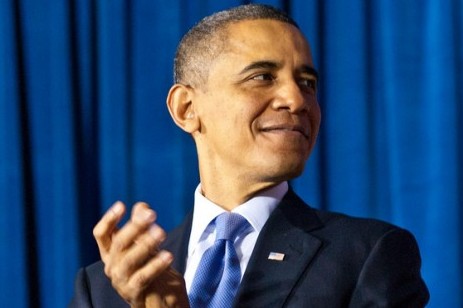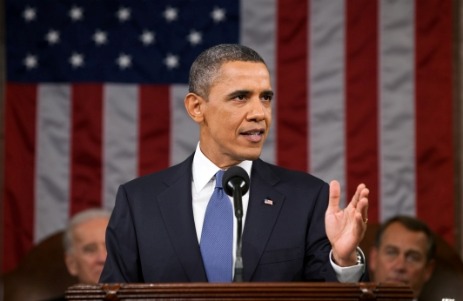Ezra Klein and Paul Krugman both ding President Obama for not offering more policy specifics in his State of the Union address. I don’t think that’s entirely fair. This is all Kabuki theater anyway. Obama can’t pass legislation, only Congress can, and this Congress isn’t about to do what Obama tells them. Offering specific numbers, which he did in some places, is a just different form of Kabuki. Recall, in his 2009 SOTU and budget he was quite specific about the kind of cap-and-trade program he wanted. It didn’t end up mattering much.
None of these targets — 80 percent clean energy, 80 percent access to high-speed rail, a million electric cars — have any policy force. They are offered as signaling devices, attempts to frame political debates to come. In that context, I thought what he did on energy was quite a bit more interesting and significant than its being given credit for.
He said we should shoot for 80 percent “clean energy” by 2035. In that he includes renewables, nuclear, “clean coal,” and natural gas. But think about it: what would that exclude? It’s pretty much everything except dirty coal. What Obama is calling on Congress to do is to reduce the amount of dirty coal America uses, from its current level — around 45 percent — to 20 percent.
(Note: I’m assuming by “clean coal” Obama means coal plants that capture and bury the majority of their carbon emissions. There are currently no such plants operating in the U.S. All coal is dirty coal, at least for now, and most experts expect that to be true for another decade at least.)
Opening up the domestic “clean energy race” to a wider field of competitors is smart both substantively and strategically.
On the substance, there’s a simple reason to go right after coal. To paraphrase Willie Sutton, that’s where the pollution is. Whether it’s carbon, smog, mercury, or toxic ash, coal plants are the main sources of pollutants that kill or sicken hundreds of thousands of Americans a year. Closing down dirty coal plants serves several goals at once, from public health to climate mitigation to social justice to job creation (yes, job creation). It also opens up more competition among clean(er) sources, which can only be good for both prices and emissions.
Politically, it flips the usual script of “renewables vs. fossil fuels,” which pits coastal liberal enclaves against the heartland and the South. Instead it’s dirty coal vs. everything else. That’s a different map and a different political dynamic. It softens opposition among states that are big into natural gas, like Texas, Oklahoma, and Louisiana, or nuclear, like Illinois, South Carolina, and Georgia. Virginia and Florida have lots of biomass. It starts to look more like an even fight, politically speaking. If you squint just right you can see the top of that 60-vote wall in the Senate.
It’s safe to say not all legislators are stupid, and the ones in the business of protecting Big Coal will see this play coming. They’ve still got plenty of power, at the very least enough to water the proposal down. But inside Obama’s proposal it’s possible to see at least a glimmer of a way to break the wall of opposition that stands between America and a low-carbon future.
And aren’t we supposed to be winning the future?



